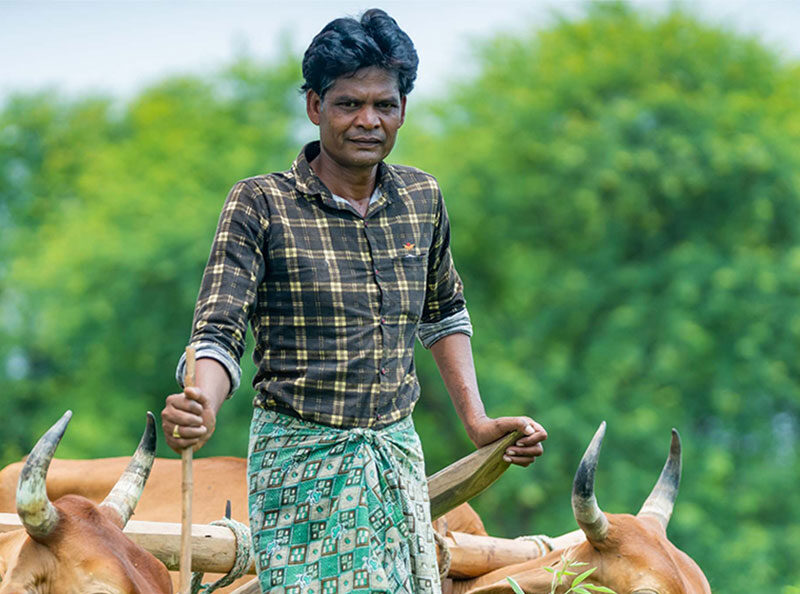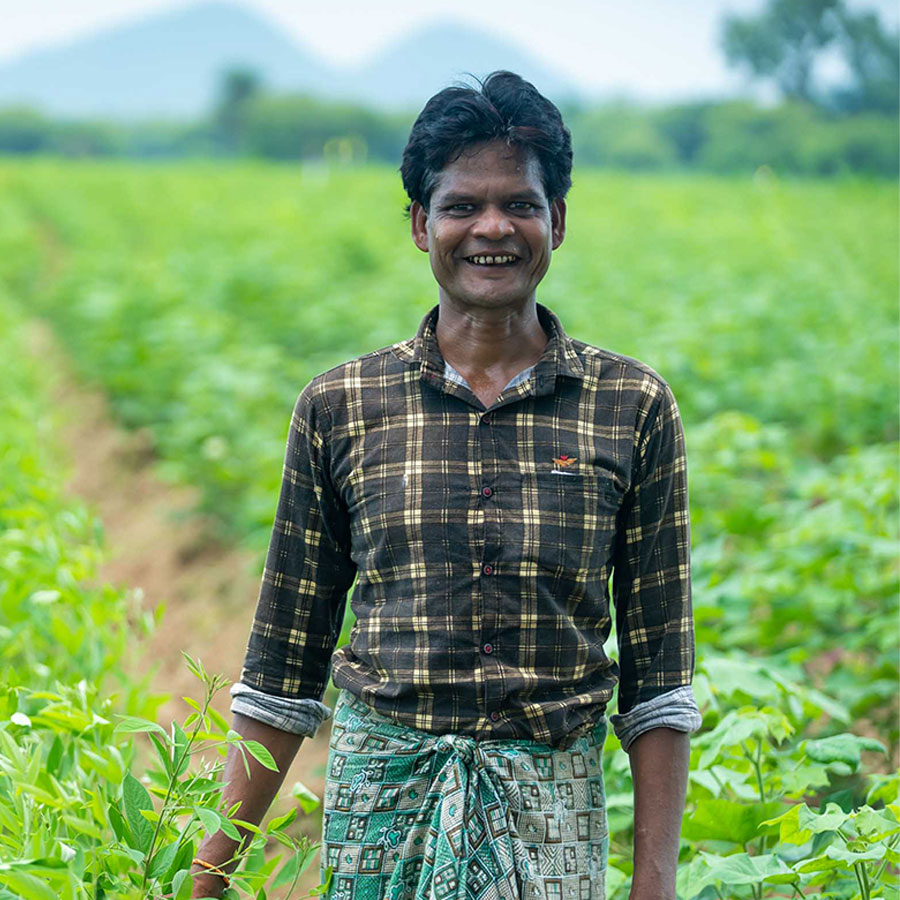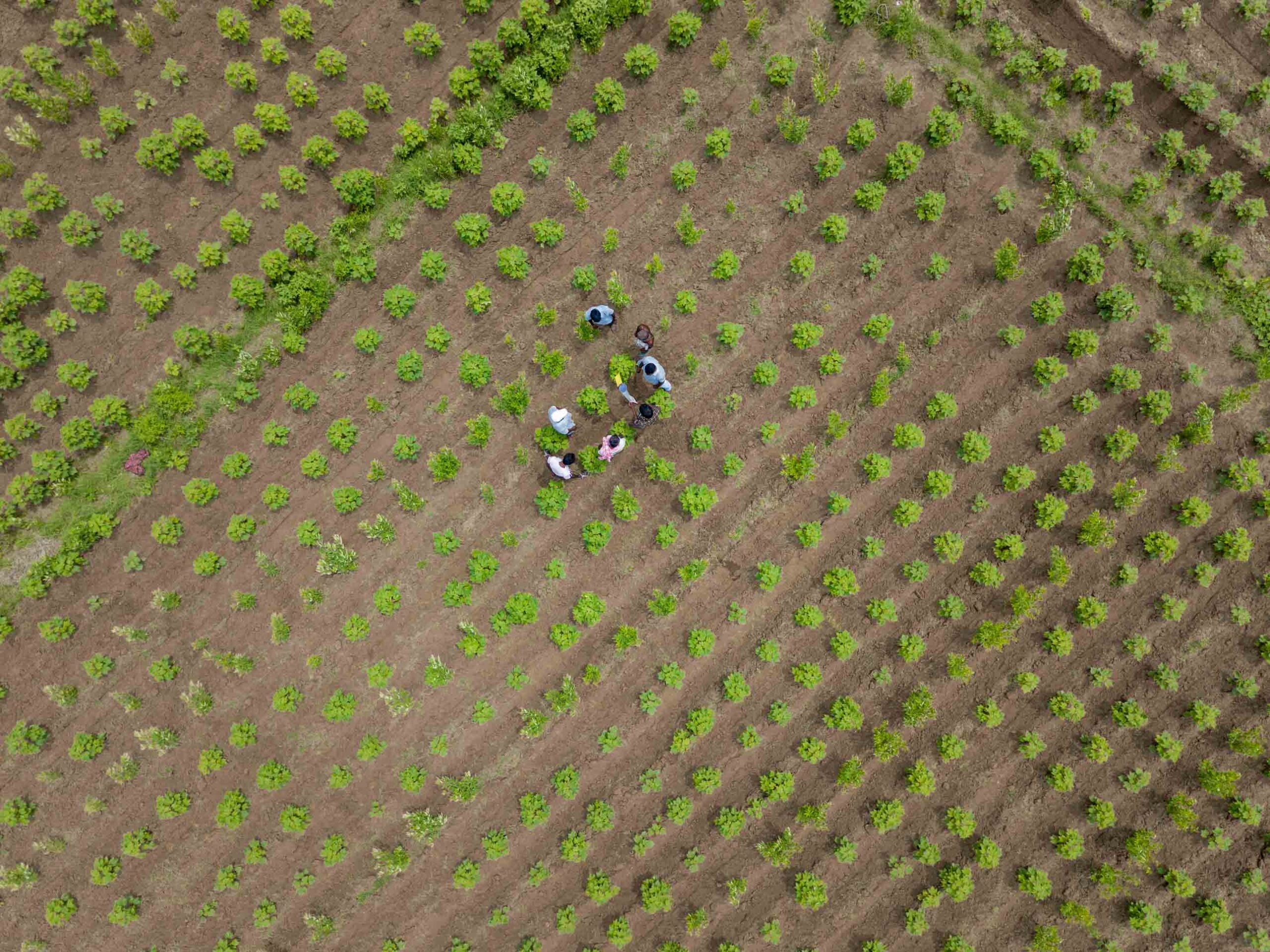In-conversion Cotton
Organic cotton accounts for less than 1% of total global cotton production, so brands and retailers who are increasingly incorporating organic cotton into their supply chains should be a good thing, right?

Accelerating the path to in-conversion cotton
We know organic production can bring financial benefits for farmers as they can receive higher market prices for cotton, and it can produce positive impacts on their land due to the elimination of synthetic pesticides and fertilisers. But as more brands choose to source organic cotton, demand is swiftly outpacing supply because there aren’t enough incentives for farmers to convert, or transition, to organic production. Why is that?
The conversion period from conventional to organic agriculture takes up to three years. This in-conversion or transitional period is necessary to build up soil fertility and re-establish the balance of the ecosystem. It is the period in which the farmer undertakes all the actions required to achieve organic certification. In-conversion fibres are the output of the farms once they have entered the conversion period. During that period, all inputs and practices prohibited in organic farming apply and certification bodies conduct annual audits as per international organic agriculture standards.
During this time, farmers can experience lower yields and as their cotton is not yet certified organic, they cannot claim the organic premium payment. In short, farmers initially lose money. In addition, they have problems finding high-quality, GMO-free seeds – an essential prerequisite to farming organically. This conversion period can be tough, so it’s no surprise that many smallholders require additional support, so they don’t give up on converting to organic cotton within the first year.
We can’t overemphasise the importance of providing that support to farmers. Just as we can’t ignore the positive ripple effect of that support in terms of the regenerative benefits the in-conversion period can deliver to their farmland. Moving from conventional to organic agriculture can result in positive environmental and health impacts. By working with nature and not against it, organic farmers leverage ecological processes and cycles adapted to local conditions, rather than using chemical inputs with adverse effects. The result is healthier soils, increased crop resilience, and a cleaner natural environment for everyone. To accelerate this positive change, we need to champion and support in-conversion cotton to help thousands of farmers to make the transition to organic cotton production.
We know it can be challenging to stick with (let alone switch to) organic cotton farming, which is why OCA exists. OCA’s interventions have always focused on creating the conditions for organic cotton to thrive – by putting farmers first. OCA’s Farm Programme improves farmer livelihoods by creating a secure market for them to sell their cotton and equipping them with the training, support, and access to high-quality seed supply and other critical inputs they need to produce organic cotton in the best way possible.
The Farm Programme has mobilised a growing number of brands and retailers to act in their own supply chains. OCA links them to organic cotton farm groups through our direct-to-farmer sourcing model and by making sourcing commitments directly to these farm groups, brands can benefit from increased transparency1 at the farm level and a secure supply of organic cotton, whilst delivering tangible gains to organic farmers.
This year, the OCA Farm Programme celebrates five years of tenure by expanding to include in-conversion in all our projects, so we can support growers as they switch to organic practices. By helping farmers navigate the challenges of the in-conversion period, we can improve their livelihoods and increase the supply of organic cotton—a win for all. But we can’t do it alone. We need brands to invest in these programmes and these farmers now to access the next generation of organic cotton supply.
Key principles for in-conversion
In unison with our Implementation Partners and Brands, we have agreed on four key principles which will form the foundation of OCA’s In-conversion Programme.

A multiyear agreement for brands and farmers
Through our Farm Programme we support brands and farm groups with a long-term business relationship that will encompass the entire conversion journey, right through to organic certification. This partnership will remove the very real barriers to conversion. Farmers will have the coaching and peer-support they need to successfully change cultivation methods – from preparing and using organic inputs, to finding the right seed to suit their local growing conditions. They will also receive pre-financed seed and bio-inputs which will alleviate their start-up costs. They will be supported every step of the way.
A guaranteed offtake and a farmer premium
We will make sure that farmers in our programme have a committed buyer for their cotton, to illustrate that in the long-term it really does pay to farm organically. The security provided by a committed buyer and market linkages is not only important for organically certified cotton; it is even more crucial for the in-conversion period. A committed buyer gives farmers the peace of mind that they can sell their cotton and that it will receive a better price due to the premium they will receive. This is the business case they need to switch to organic farming.
The rigour of a robust data validation framework
Through seasonal cycles of farm data validation and reporting, OCA drives continuous improvement in good organic agricultural practice. This mechanism bolsters the organic standard and improves farmer output and livelihood. By applying OCA’s data validation model from the very first year of conversion, farmers benefit from additional external financial and input support as well as learning cycles from the start of their journey.
The acceleration of target setting
We know meaningful targets can drive results, so we’re aiming to boost the number of in-conversion farmers in the OCA Farm Programme from 30,000 per year to 48,000 per year by 2030. We know the market is fast realising the need to invest in in-conversion cotton. As brands and retailers work to meet their sustainable sourcing targets, they are finding it harder to source the quantities of organic cotton they need. This is the solution the market needs to future-proof its sourcing practices and deliver equity for smallholder farmers.

What can brands do?
OCA has already secured 20% offtake lint commitments for ‘in-conversion cotton’ in our Farm Programme for the upcoming 21/22 season. The sector is also keeping pace with this new demand; the leading Chain of Custody standards for organic cotton, the Global Organic Textile Standard (GOTS), and Textile Exchange’s Organic Cotton Standard (OCS) have updated their labelling and claims guidelines to include in-conversion/ transitional cotton to help brands make claims on finished products containing organic and/or in-conversion cotton.
At OCA, we are here to accelerate the availability of organic cotton and one way to facilitate that is by driving the adoption of in-conversion cotton. Partners with a long-term outlook have been investing in in-conversion projects in our Farm Programme since the 19/20 season. They are the frontrunners, leading the trend of brands recognising the importance of investing in supporting farmers today, to reap the benefits of increased organic cotton supply in the future.

The time to act is now
Our message to brands is to invest and invest now. There is no alternative to organic cotton and there is no going back on public commitments. The clearest course of action is to invest in in-conversion cotton so we can increase the supply and meet the sector’s public commitments.
We need to invest in partnership; long-term relationships that support transparency and accountability throughout the value chain. If the pandemic has taught us anything it is that no amount of cost-saving is worth an unstable supply chain that threatens the foundation of businesses.
We predict that the next season will further solidify the need for better sourcing and commercial practices in the sector. If we allow the market to slip back into its old ways now, we will lose the progress we have made in making the sector more sustainable, in ensuring farmers get premiums, and in getting businesses to play the long game – it is a decisive moment, and we cannot drop the ball now. Finally, we need to invest in farmers and make it worth their while to continue to grow organically and make decisions that are in the best interest of the planet.
OCA has shown that this model can work for everyone in the supply chain. And there is a strong demand to scale. We are welcoming everyone to the table to accelerate the progress of our programmes and increase the impact we know organic cotton can deliver to farming communities and the organic cotton sector. The question is, are you ready to join us?
